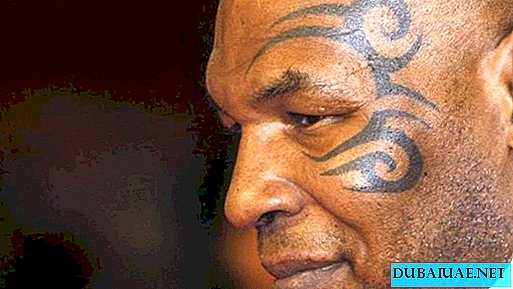 Dmitry Kuznetsov, our own expert on jewelry and a regular author
Dmitry Kuznetsov, our own expert on jewelry and a regular author
I always treated jewelry with some prejudice, and even neglect. No, I confess I liked some of her designs, but I perceived them as beautiful Christmas-tree decorations and nothing more. That is, on a mannequin, of course, jewelry can look, but wearing it is not comme il faut.
If you take jewelry as a fake, or rather, an imitation of jewelry, it does not cause respect. Any copy is worse than the original. And even though I realized that this was a somewhat outdated understanding of jewelry, and for quite some time products from non-precious materials became a separate industry in the creation of jewelry, in fact, the idea remained the same.
In general, jewelry did not interest me at all until one case. On duty, bypassing jewelry stores and looking at the shop window, I caught myself thinking that from the presented assortment I practically did not like anything; there were no interesting works, and there was nothing to catch on the eye.
Tired of the monotony of things, I sat down at a table in a cafe and began to browse the catalogs of various jewelry companies, among which I accidentally came across a brochure by Bernardaud Porcelain Jewels. It is a jewelry division of a company well-known for producing high-quality porcelain. They actually make their jewelry from the same material, which is not noble in terms of jewelry, but the design solutions used in them were so fresh and original that they inevitably caused much more positive emotions even against the background of the gold-diamond products viewed before. That's how I first showed interest in jewelry. After that, I began to wonder about why products made of base materials evoke such conflicting feelings, from complete rejection to worship. Moreover, the proportions of admirers and opponents are approximately the same. What is it, the struggle of snobbery with kitsch? I tried to figure out all the pros and cons.
The main reason for the pros is often the fact that jewelry can be worn every day, while jewelry is more suitable for special or special occasions. It is difficult to agree with this, since jewelry does not have to be too elegant or pompous, which makes them unsuitable for daily wear. Jewelry can be concise and discreet and suitable for everyday use. It seems much more reasonable to me to say that with the help of jewelry you can achieve more variety, in other words, every day with a new outfit you can put on new jewelry, and the rapidly changing fashion forces you to change the contents of not only fashionistas' wardrobes, but also their caskets. And in the case of jewelry, the price allows you to do this. There is no arguing that expensive jewelry is far from accessible to everyone, at least not in the quantity you want.
The reasons for the reluctance to wear jewelry can be briefly expressed by the phrase: either gold, or nothing. But where does this addiction to precious metal come from? For an answer you can turn to the story.
The first jewelry that our distant ancestors began to wear at the dawn of civilization was precisely jewelry, in its modern sense. These were products from the bones and fangs of animals, feathers of birds, shells and rough stones. I used the word "jewelry", although in essence this is not entirely true. Not embellishment was the main task of all these gifts of nature. This was not the time for ancestors, although I would like to believe that craving for beauty was inherent in them in those difficult times of the struggle for survival. All these objects had a mystical and sacred meaning and were used as amulets or charms, drove away evil spirits, brought good luck on the hunt, and so on. Even necklaces from hunting trophies spoke of the skill and fortune of a hunter, his strength, dexterity and ability to get food.
Namely, such qualities should have possessed a leader (leader, leader) in the eyes of his fellow tribesmen. That is, we are slowly approaching the fact that jewelry becomes a sign of selectivity, which will fully develop in subsequent centuries.
Further, people learned to process metals, and in addition to making weapons, tools, household items, etc. began to make jewelry. The social system was changing, and in order to become a leader, accuracy, strength and speed were not defining qualities. But the attributes of power and power were to highlight and exalt their owners. Moreover, these symbols were required to be inaccessible to the rest. Precious metals came in handy here. To verify the validity of these assumptions, it is enough to recall the vestments of the rulers, starting from the Egyptian pharaohs to European kings and Russian tsars. You cannot imagine a monarch with a glass scepter, a tin power, and a wooden crown.
 In addition to the aesthetic, the function of jewelry was to show the selectivity of the owners, their status. It was rarity, and as a result, the high price, was one of the criteria that ensured this state of affairs. It’s not natural for people to pay a lot for what is available to everyone. Is this the reason for worshiping the golden god? But back to the history of jewelry. Although not everyone is aware of this, but almost everyone knows the name of a person who could be considered the “king of jewelry”. Meet Strass. Georges Frederick Strass. It was this jeweler who lived in the eighteenth century who invented glass processing technology, thanks to which a worthless trinket became practically indistinguishable from a gem. Since then, such imitations began to bear the name of their creator - rhinestones. But, being an adventurer by nature, Strass applied his discovery in such a way that his actions qualified as fraud. He gave his fakes as real jewelry, which for the "king", you see, is not solid. Not to say that he succeeded in the field of jewelry, but rhinestones are still very widely used not only in the manufacture of jewelry, but also in the decoration of clothes, shoes and other products, the creator of which seems to be that their offspring lack an extra sparkle.
In addition to the aesthetic, the function of jewelry was to show the selectivity of the owners, their status. It was rarity, and as a result, the high price, was one of the criteria that ensured this state of affairs. It’s not natural for people to pay a lot for what is available to everyone. Is this the reason for worshiping the golden god? But back to the history of jewelry. Although not everyone is aware of this, but almost everyone knows the name of a person who could be considered the “king of jewelry”. Meet Strass. Georges Frederick Strass. It was this jeweler who lived in the eighteenth century who invented glass processing technology, thanks to which a worthless trinket became practically indistinguishable from a gem. Since then, such imitations began to bear the name of their creator - rhinestones. But, being an adventurer by nature, Strass applied his discovery in such a way that his actions qualified as fraud. He gave his fakes as real jewelry, which for the "king", you see, is not solid. Not to say that he succeeded in the field of jewelry, but rhinestones are still very widely used not only in the manufacture of jewelry, but also in the decoration of clothes, shoes and other products, the creator of which seems to be that their offspring lack an extra sparkle.
Daniel Swarovski went the other way. That's really a man who is worthy of the crown of the empire under the name Jewelry. Originally from Bohemia, famous for its glass production, Daniel from childhood worked in one of the many workshops specializing in this particular business. The Czech's curiosity prompted him to go to study exact sciences in Paris, where he had the idea to create an electric machine for grinding glass products, which was created in 1891. After that, Daniel moves to Austria, where he arranges the release of crystal imitating precious stones.
But, in addition to the machine, the talented Czech has developed a unique crystal formula that made the glass surprisingly transparent. Unlike its predecessor, Swarovski does not hide the fact that crystals shining almost like real diamonds, and standing incomparably cheaper, is an imitation. If jewelry was appreciated, including because of its inaccessibility to everyone, Daniel sought exactly the opposite - to increase the sales market by attracting a wide range of potential buyers. And it bore fruit. Having received a huge number of orders for his products, Daniel expanded his factory, laying the foundation of the legendary Swarovski company.
Today there is a Swarovski museum, a Swarovski product collectors club, and just a multimillion-strong army of Swarovski crystal lovers. Selling illusions yielded a stunning result!
What is the result of the confrontation of jewelry made of precious metals and jewelry. I came to the following conclusion - you can wear JEWELRY, you can wear COSTUME JEWELERY, the main thing is that the quality of performance and the artistic level of these things would allow you to write their names in capital letters.










